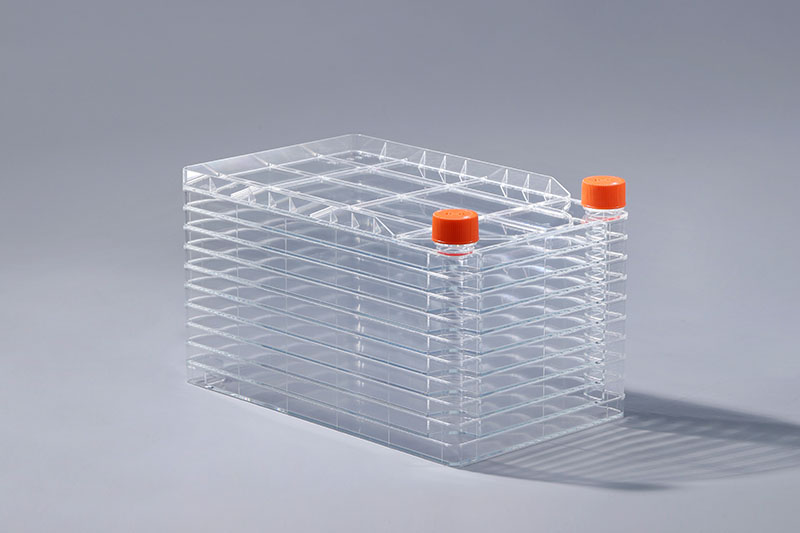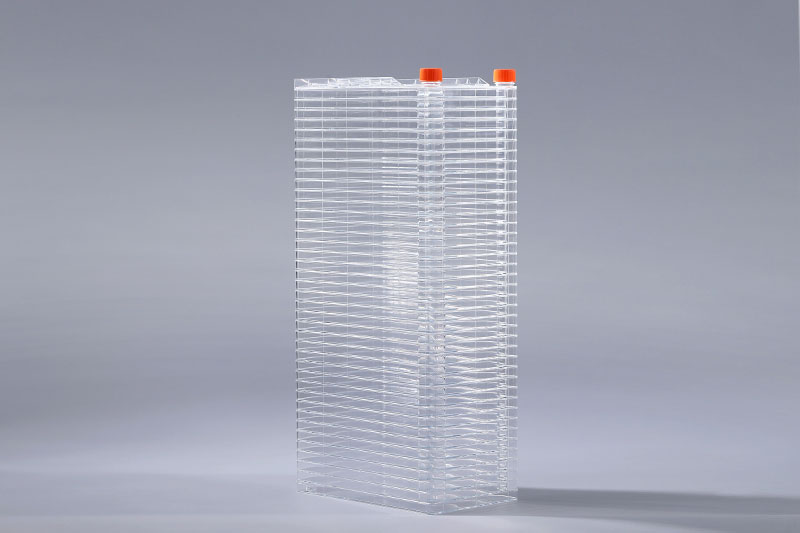In the large-scale culture of cells, in order to facilitate the operation, multiple cell factories are usually connected in series, which saves the operation of multiple openings and reduces the risk of contamination. So, how do we cascade multiple factories?
The cell factory is a culture vessel with a multi-layer structure. Enlarging the culture scale can be achieved by increasing the number of layers. However, when the number of cells increases, we will encounter a problem - repeated repeated operations. As the number of cap openings increases, not only does the operation time increase, but so does the risk of cell contamination. At this time, the developed culture components can be combined into a closed system by connecting multiple containers in series. The operation method is as follows:
FuDau 10 Layers Cell Factory
1. Prepare custom transfer caps, culture medium, cell factory, and connecting tubing.
2. Connect the liquid transfer cap to the medium bottle, the cell factory and the connecting pipeline in a Class A environment.
3. Connect the liquid transfer cover and the connecting pipeline through the quick joint to form a closed system.
FuDau 40 Layers Cell Factory
4. Carry out the liquid transfer operation. After the liquid transfer is completed, the connecting pipeline can be kept on the cell factory for cultivation, and used for the next step of medium exchange and passaging operations.
The above are the specific operation steps of connecting multiple cell factories in series. We must pay attention to aseptic operation during operation to avoid introducing external contamination and affecting the growth of cells.
The FAI climbed 5.9 percent year-on-year in the first 11 months of 2018, quickening from the 5.7-percent growth in Jan-Oct, the National Bureau of Statistics (NBS) said Friday in an online statement.
The key indicator of investment, dubbed a major growth driver, hit the bottom in August and has since started to rebound steadily.
In the face of emerging economic challenges home and abroad, China has stepped up efforts to stabilize investment, in particular rolling out measures to motivate private investors and channel funds into infrastructure.
Friday's data showed private investment, accounting for more than 60 percent of the total FAI, expanded by a brisk 8.7 percent.
NBS spokesperson Mao Shengyong said funds into weak economic links registered rapid increases as investment in environmental protection and agriculture jumped 42 percent and 12.5 percent respectively, much faster than the average.
In breakdown, investment in high-tech and equipment manufacturing remained vigorous with 16.1-percent and 11.6-percent increases respectively in the first 11 months. Infrastructure investment gained 3.7 percent, staying flat. Investment in property development rose 9.7 percent, also unchanged.
 English
English




















































